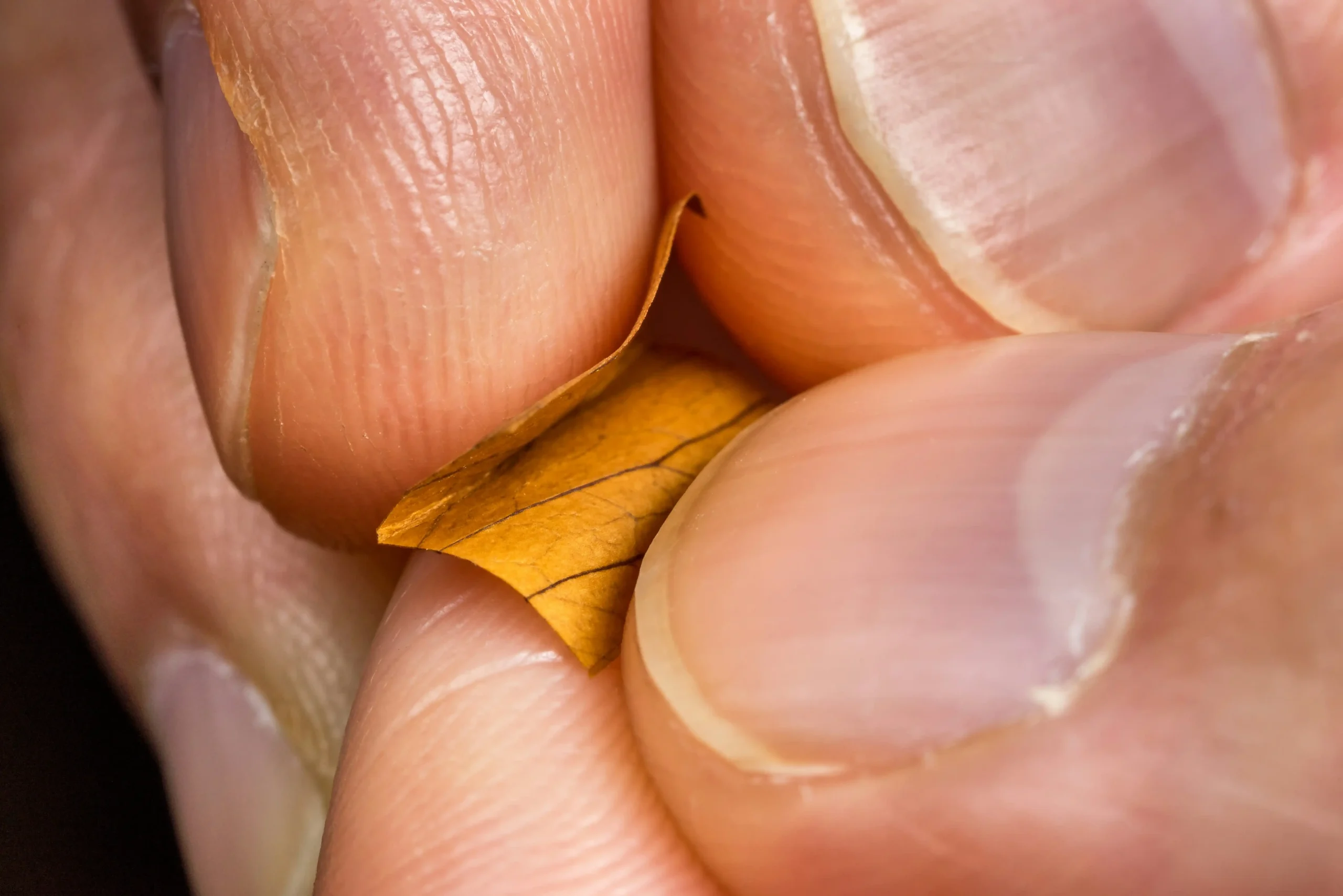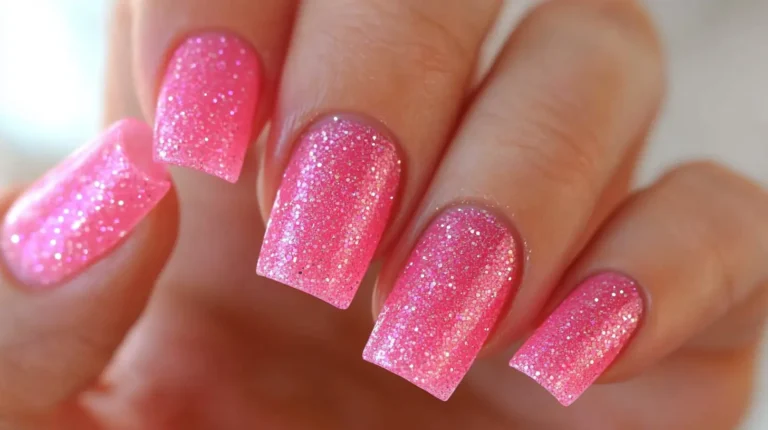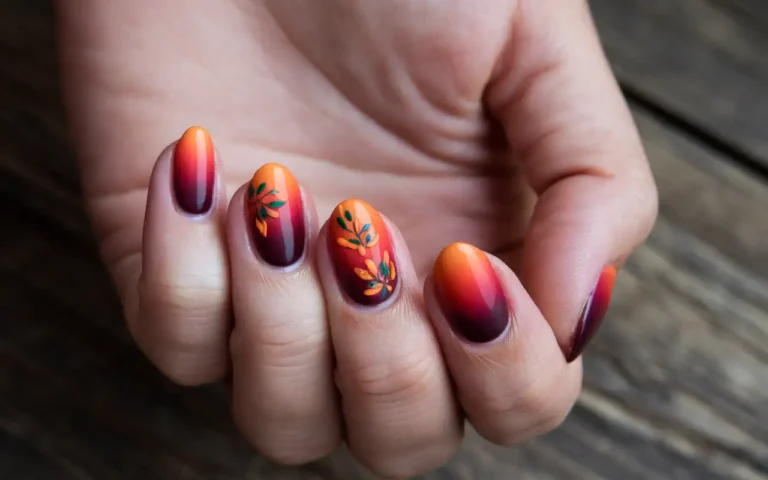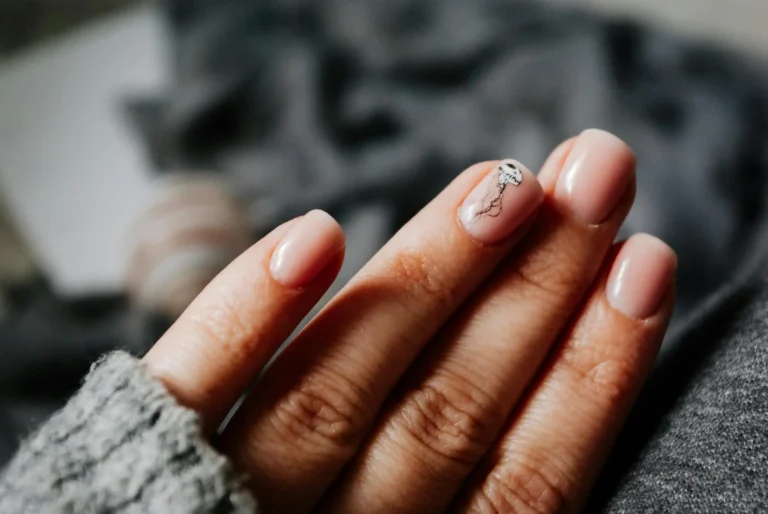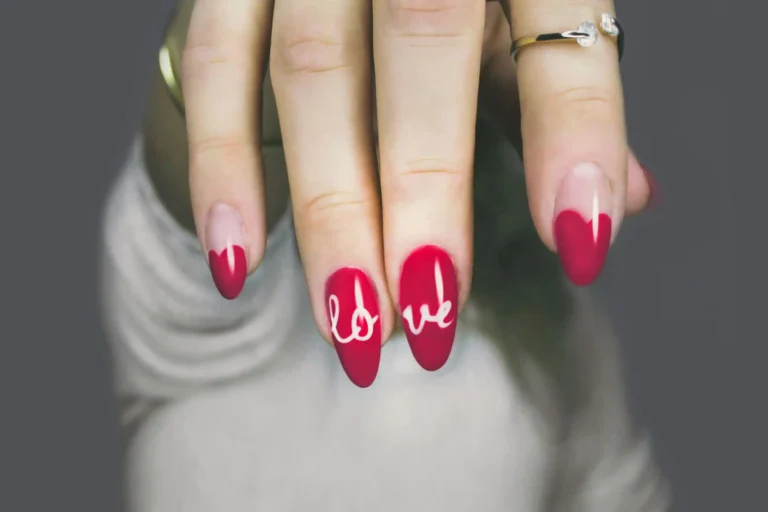How to Avoid Yellow Stains from Nail Polish
You love experimenting with bold nail colors, but those unsightly yellow stains on your natural nails make you think twice about your next manicure.
Don’t let stained nails limit your polish choices.
With the right techniques and preventive measures, you can enjoy vibrant colors while keeping your natural nails healthy and stain-free.
Understanding Why Nail Polish Stains Your Nails
Your nails absorb pigments from nail polish, especially darker and more vibrant shades.
The nail plate acts like a sponge, soaking up color molecules that penetrate the keratin layers.
This process happens gradually during wear time, making prevention crucial from the very beginning.
Certain ingredients in nail polish accelerate staining. Formaldehyde, toluene, and specific dyes create deeper penetration into your nail bed.
Red, orange, and dark purple polishes contain the most aggressive staining agents.
These colors use iron oxides and other metallic compounds that bond strongly with nail proteins.
Your nail’s porosity also affects staining susceptibility.
Damaged, weak, or overly porous nails absorb pigments faster than healthy ones.
Previous chemical treatments, frequent polish changes, or harsh removal methods increase your nails’ vulnerability to discoloration.
Environmental factors play a role too. Heat, humidity, and UV exposure can intensify the staining process.
When you wear nail polish in hot weather or spend time in direct sunlight, the warmth opens your nail’s pores, allowing deeper pigment penetration.
Master the Base Coat Application
A quality base coat creates an essential barrier between your natural nail and colored polish.
Think of it as a protective shield that prevents direct contact between staining agents and your nail plate. Never skip this crucial step, regardless of the polish color you’re using.
Choose base coats specifically formulated for stain prevention. Look for products containing calcium, protein, or ridge-filling ingredients.
These components strengthen your nails while creating an impermeable layer.
Avoid water-based base coats when using highly pigmented polishes, as they offer less protection than their solvent-based counterparts.
Apply your base coat in thin, even layers. Start with a stroke down the center of your nail, then paint each side.
Ensure complete coverage from cuticle to tip, including the nail edges. Allow each layer to dry completely before applying color polish.
Most base coats need two to three minutes of drying time.
Consider using specialized stain-blocking base coats for problematic colors.
These products contain titanium dioxide or zinc oxide, which create an opaque barrier.
Some brands offer tinted base coats that neutralize potential staining while providing additional coverage.
Perfect Your Nail Preparation Routine

Clean, properly prepared nails resist staining better than neglected ones.
Start by removing all traces of previous polish using an acetone-free remover.
Acetone can dry out your nails, making them more porous and susceptible to staining. Gentle, conditioning removers maintain your nail’s natural moisture barrier.
Shape your nails before applying any products. File in one direction using a fine-grit file to prevent creating microscopic tears that trap pigments.
Avoid metal files, which can cause nail damage and increase staining risk. Glass or crystal files provide the smoothest finish while maintaining nail integrity.
Push back your cuticles gently after soaking your hands in warm water.
Well-maintained cuticles prevent polish from seeping underneath and staining the nail bed.
Use a wooden cuticle stick rather than metal tools to avoid creating tiny cuts that allow pigment penetration.
Buff away any ridges or imperfections using a gentle buffer. Smooth nails hold base coat more evenly, creating better stain protection.
However, avoid over-buffing, which thins the nail plate and increases porosity. Light buffing once or twice per month is sufficient for most people.
Choose Your Polish Colors Strategically
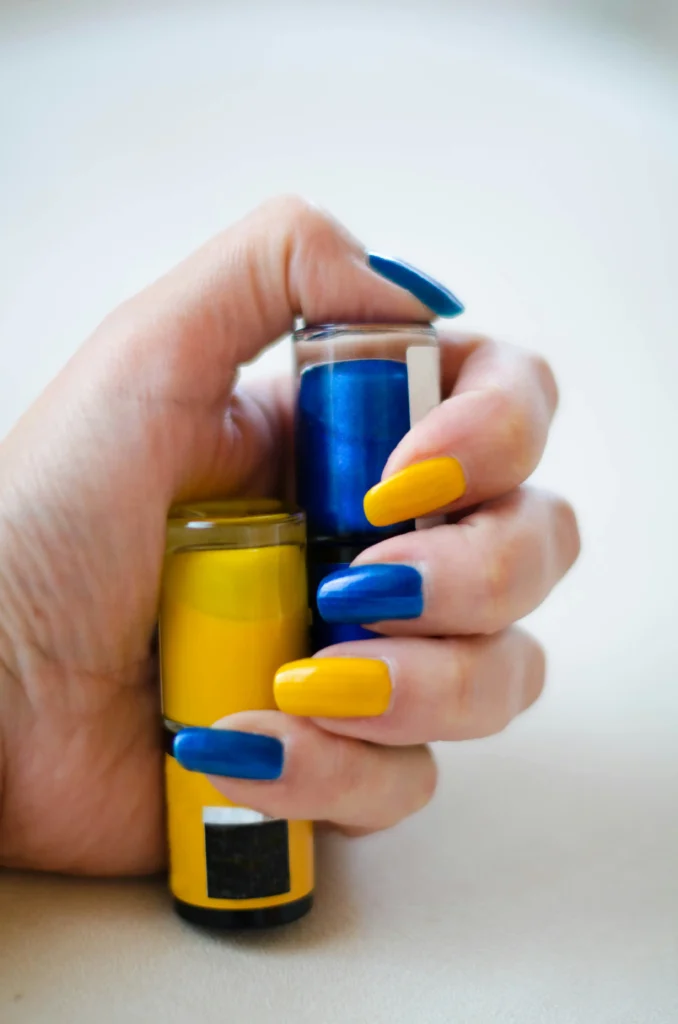
Lighter colors pose significantly less staining risk than darker, more saturated shades.
Pastels, nudes, and sheer formulas contain fewer aggressive pigments.
When building your polish collection, balance bold colors with safer alternatives you can wear more frequently without worry.
Red polishes present the highest staining risk due to their iron oxide content.
If you love red nails, invest in high-quality base coats and limit wear time to five days maximum.
Cherry reds and blue-based reds tend to stain more than orange-based or coral reds.
Orange and yellow polishes also require extra caution.
These colors often contain cadmium-based pigments that bond strongly with keratin.
Bright oranges and true yellows need the most protection, while peachy or golden shades pose moderate risk.
Dark purples, especially those with blue undertones, can leave persistent stains.
These polishes combine multiple staining agents to achieve their rich color depth.
Navy blues and black polishes, surprisingly, cause fewer stains than many expect, though they still require proper base coat protection.
Apply Polish with Stain-Prevention Techniques
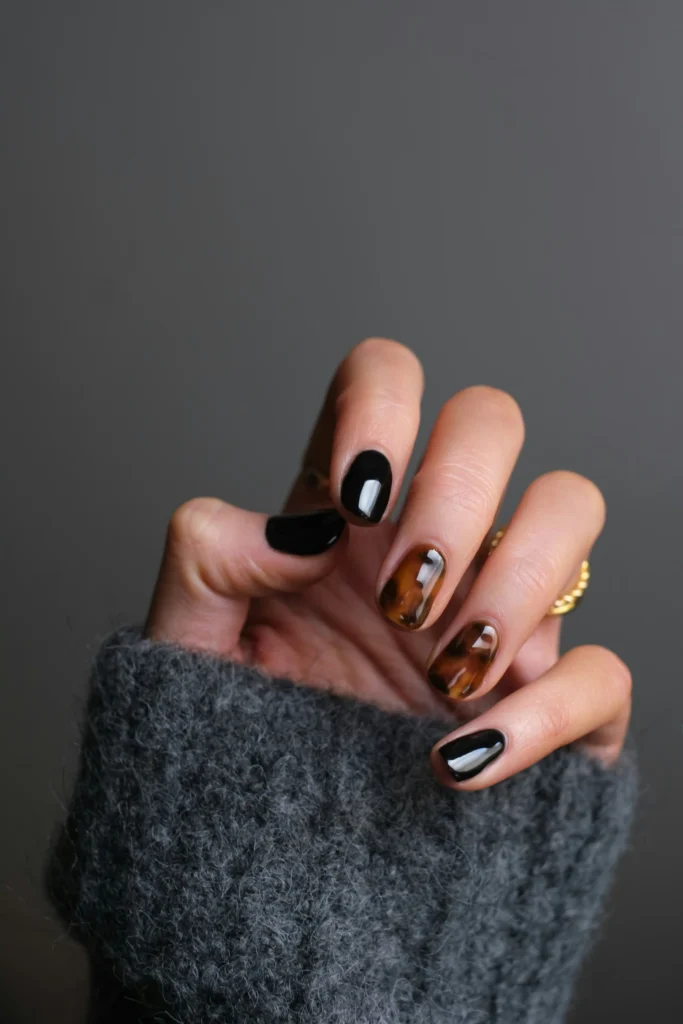
Thin coats provide better stain protection than thick applications.
Multiple thin layers allow each coat to dry properly, preventing pigment pooling that increases staining risk.
Thick coats take longer to dry and create deeper pigment penetration into your nail bed.
Wait adequate drying time between coats. Most polishes need two to three minutes between applications.
Rushing this process traps moisture and prevents proper curing, which can lead to premature chipping and increased staining exposure.
Avoid flooding your cuticles with polish. Excess product around your nail bed is difficult to remove completely and can cause persistent staining in that area.
Use a cleanup brush dipped in acetone to remove any overflow immediately after application.
Seal your manicure with a quality top coat.
Beyond adding shine and longevity, top coats create an additional barrier that prevents environmental factors from accelerating the staining process.
Reapply top coat every two to three days to maintain this protective layer.
Remove Polish Properly to Prevent Damage
Use gentle, conditioning nail polish removers instead of harsh acetone formulas.
Acetone strips natural oils from your nails, making them more porous and stain-prone for future applications.
Look for removers containing moisturizing ingredients like vitamin E or aloe vera.
Soak cotton pads with remover and press them onto your nails for 10-15 seconds before wiping.
This softening technique prevents aggressive scrubbing that can damage your nail surface. Gentle removal protects your nail’s natural barrier function.
Remove one nail at a time rather than attempting to clean all ten fingers simultaneously.
This focused approach ensures complete removal without rushing the process. Leftover polish residue can oxidize and create permanent staining over time.
Follow removal with a nourishing treatment.
Apply cuticle oil and hand cream immediately after taking off polish.
This practice replenishes moisture and prepares your nails for the next manicure application.
Maintain Healthy Nails Between Manicures
Give your nails regular breaks from colored polish. Schedule polish-free periods of three to seven days every few weeks.
During these breaks, focus on nail and cuticle care to restore their natural strength and reduce porosity.
Apply strengthening treatments during your polish breaks.
Protein-based nail treatments, calcium formulas, or keratin infusions help repair damage and create stronger barriers against future staining. These treatments work best on clean, unpolished nails.
Moisturize your nails and cuticles daily.
Well-hydrated nails are less porous and more resistant to staining.
Use dedicated nail and cuticle oils rather than regular hand cream for better penetration and protection.
Protect your hands during household chores.
Cleaning chemicals, hot water, and harsh detergents can weaken your nails and increase staining susceptibility. Wear gloves during cleaning, dishwashing, and gardening to maintain nail health.
Address Existing Yellow Stains
Don’t panic if you already notice yellow discoloration. Several effective treatments can restore your nails’ natural color.
Start with gentle methods before progressing to stronger treatments that might damage weakened nails.
Create a baking soda paste using equal parts baking soda and water. Gently scrub this mixture onto stained nails using a soft toothbrush.
The mild abrasive action lifts surface stains without excessive damage. Rinse thoroughly and follow with moisturizing treatment.
Try lemon juice treatments for stubborn stains. Soak your fingertips in fresh lemon juice for 10-15 minutes, then scrub gently with a nail brush.
The citric acid naturally bleaches stains while the vitamin C nourishes your nail bed. Use this treatment sparingly to avoid over-drying.
Consider professional whitening treatments for severe staining.
Many nail salons offer specialized treatments that safely remove deep stains without compromising nail health.
These treatments often combine gentle acids with conditioning agents for optimal results.
Invest in Quality Products
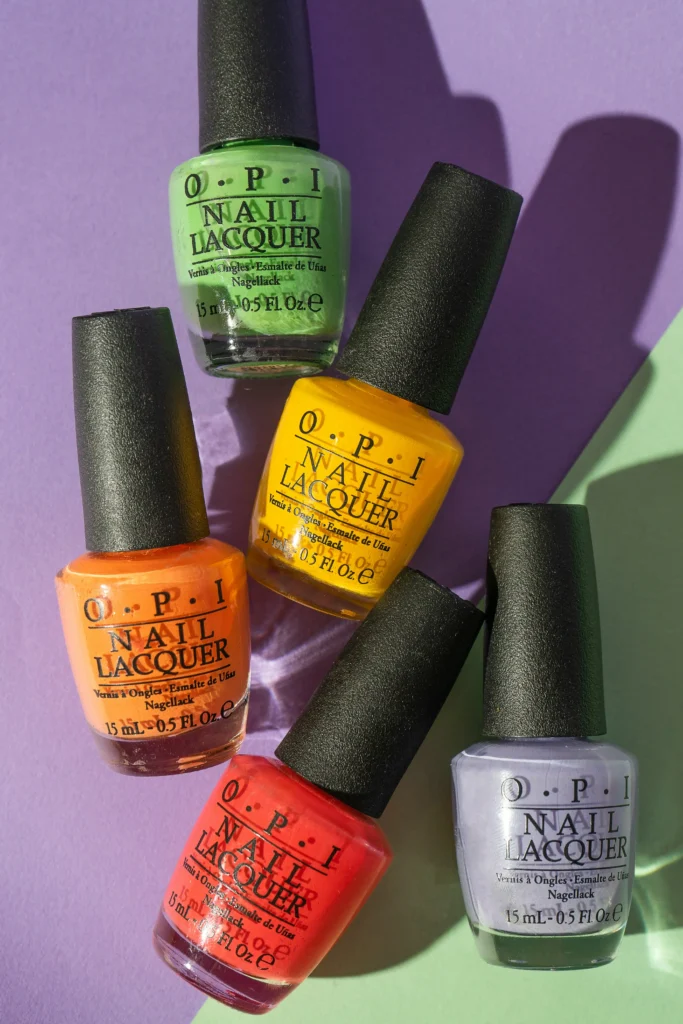
High-quality nail products provide better stain protection than budget alternatives.
Premium base coats contain more effective barrier ingredients and apply more evenly.
Quality polishes often use better pigment technologies that reduce staining potential while maintaining color vibrancy.
Research brands known for nail-friendly formulations. Many companies now offer “3-free,” “5-free,” or “10-free” polishes that exclude common staining and damaging ingredients.
These formulations typically cause less staining while providing excellent color payoff.
Consider professional-grade products for home use. Salon-quality base coats and treatments offer superior protection compared to drugstore options.
While more expensive initially, these products often provide better results and longer-lasting protection.
Read ingredient lists carefully when shopping for nail products.
Avoid polishes containing formaldehyde, toluene, DBP, or excessive amounts of metal-based pigments if staining is a primary concern for you.
Timing Your Manicures Strategically
Limit bold color wear time to reduce staining risk. Most staining occurs after the five-day mark, so plan your manicure changes accordingly.
For special events requiring dark colors, apply them close to the occasion and remove them promptly afterward.
Schedule nail breaks strategically around your lifestyle.
Plan polish-free periods during times when you’re frequently washing hands, swimming, or engaging in activities that naturally shorten manicure life anyway.
Consider alternating between bold and neutral colors.
This rotation gives your nails recovery time while still allowing you to enjoy your favorite dramatic shades regularly.
Time your color changes with your nail growth cycle.
Removing polish when you need to trim your nails anyway maximizes color wear time while minimizing staining exposure to fresh nail growth.
Conclusion
With proper preparation, quality products, and smart application techniques, you can enjoy any nail color without fear of yellow stains compromising your natural nail beauty.

